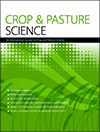CP20251Design and testing of an intermittent fertilisation method for seeding of maize (Zea mays)
 , Yehua Shang, Hebo Mei, Bingxin Yan, Weiqiang Fu, Nana Gao, Zhong Xue and Zhaoguo Zhang
, Yehua Shang, Hebo Mei, Bingxin Yan, Weiqiang Fu, Nana Gao, Zhong Xue and Zhaoguo Zhang
Fertiliser applied between maize plants by furrow application cannot be totally absorbed and used because of the wide planting space. To solve this problem, an intermittent fertilisation method for a single plant was proposed for maize seeding, and a synchronised control model of the seed and fertiliser was established and applied. The methodology of ‘one seed and one fertiliser’ reduced the fertiliser application amount and increased the fertiliser utilisation rate.




